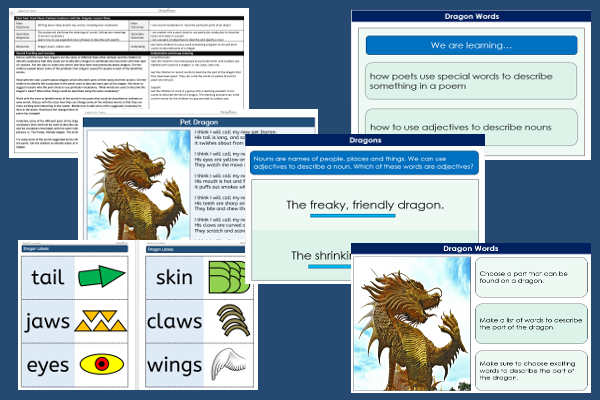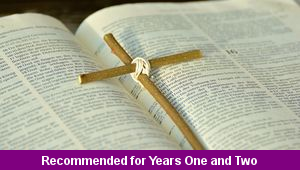Lesson Three – Dragon Words

This English teaching pack for Key Stage One gets the children to investigate and record how to make collections of some descriptive vocabulary words that can be used to describe different parts of a dragon.
The class can identify and list adjectives that have been used to describe nouns in an example poem about a dragon to illustrate what makes them special and different from other creatures.
Download this teaching pack including a lesson plan, classroom activities and an interactive presentation to investigate and record how to make collections of some descriptive vocabulary words that can be used to describe different parts of a dragon
Activities in this teaching pack include a shared reading text to identify adjectives used to describe nouns in an example poem about a dragon and a set of cards to make collections of descriptive vocabulary words that can be used to describe different parts of a dragon.
The interactive presentation gets the children to explore how to make collections of descriptive vocabulary words that can be used to describe different parts of a dragon.
This lesson is part of an English scheme of work to get the children to select descriptive vocabulary to use when writing poems that play with language to describe different parts of a dragon, explore the meaning of words with tion endings and practise writing extended noun phrases. There are teaching activities for shared learning, differentiated worksheets to support independent learning and interactive presentations to introduce concepts and key skills.
-

Vehicle Numbers
Investigate and record how to make and count models of objects to ten, twenty and thirty to match objects related to different types of vehicles
-

Bible Stories
Research and illustrate how the teachings of Jesus are presented in different stories from the Bible
-

Word Matching
Identify, match and record the initial sounds that have been used in a range of cvc words beginning with different letters
-

Family Toys
Investigate and record how a selection of different toys and games that were owned by families have changed and developed over time
